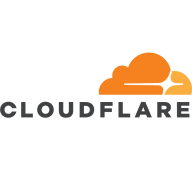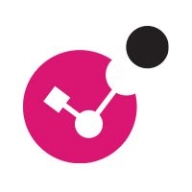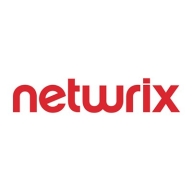


Netwrix Endpoint Protector and Check Point CloudGuard Code Security are competitors in the data loss prevention and code security categories. Netwrix Endpoint Protector has an edge in device-level data control, while Check Point CloudGuard shines in cloud security and advanced threat detection.
Features: Netwrix Endpoint Protector offers Device Control, Content-Aware Protection, Enforced Encryption, and eDiscovery, supporting macOS, Windows, and Linux. It excels in managing DLP in hybrid environments and is known for reducing data leaks. Check Point CloudGuard Code Security provides real-time data loss prevention, automation features, and quick integration with multiple code languages. Its advanced threat detection and compliance auditing offer significant value in enhancing cloud security and identifying risks.
Room for Improvement: Netwrix Endpoint Protector could improve its network and SaaS DLP components, streamline installations across OS platforms, and enhance policy customization. User suggestions include better support response and more detailed policy management. Check Point CloudGuard users suggest improvements in integration documentation, multilingual support, and reduced complexity. They also desire smoother integration with third-party tools and better ease of use.
Ease of Deployment and Customer Service: Netwrix Endpoint Protector is primarily deployed on-premises, supporting diverse OS environments. While customer support is effective, there are noted delays in response. Users emphasize the need for better proactive communication. Check Point CloudGuard operates in public and hybrid cloud spaces with responsive customer support. However, challenges remain with time zone differences and documentation as it is relatively new in Check Point's portfolio.
Pricing and ROI: Netwrix Endpoint Protector is seen as budget-friendly with flexible licensing, though recent pricing changes have led to mixed reactions. Users report ROI through compliance and data control efficiencies. Check Point CloudGuard offers affordability and high value despite initial high setup costs. Its pricing clarity can be improved, but users find it worthwhile for its enhanced security capabilities and compliance support.
WordPress security can be tricky, and that's where Cloudflare can be absolutely helpful for small businesses.
For the small project I was working on, using the basic tier provided a huge improvement at zero cost.
In terms of return on investment with Cloudflare, it costs my time to set them up, but basically once they're set up, it's done.
This would help us address issues promptly, especially during unforeseen events like DDoS attacks.
Cloudflare does not offer hands-on technical support to fix customer problems but rather a self-service model.
The key factor is the language in which the support is offered, which, in this case, is in Thai.
I would rate the support for Check Point CloudGuard Code Security as good because we can quickly email support about any problems we encounter, and they reply instantly to provide help.
I would rate the technical support for Netwrix Endpoint Protector as a nine because we have trained engineers, and I am also trained.
I never needed to contact the vendor for technical support because we faced very few issues.
It is a SaaS tool, but the fact that they have workloads deployed across the world proves that it is a highly scalable tool.
The tool offers very good performance, even during high-traffic periods.
I rate the solution’s scalability an eight out of ten.
Everything starts from the endpoint, and we maintain the Endpoint DLP in many cases while working alongside existing DLP systems.
This solution is scalable because prior to onboarding it, we took references from the vendor, the implementation vendor, and the CoSoSys team.
For DDoS protection, I would not recommend Cloudflare.
I rate the solution’s stability an eight out of ten.
The service is very stable with no impacts during high-traffic periods.
The product has been around for over 15 years now and is very stable because I started using them from version three.
Stability-wise, the solution is stable; we experienced no downtimes during our two years of usage.
There's a need for improvement in areas like AI-based DDoS attacks and Layer 7 WAF features.
Despite these challenges, overall, Cloudflare remains the preferred solution compared to Azure, AWS CloudFront, and Google Cloud Armor.
The timing aspect can lead to it being considered overpriced. This is a particular concern we have with Cloudflare, as they may struggle with accurately detecting the client.
All the features we have on the firewall on the on-premises side, we also have under CloudGuard such as IPS, Anti-Bot, and all these blades are set up in our CloudGuard.
Netwrix is known as the best DLP for Apple Macintosh computers, which is noteworthy.
Not all the policies applied to the Linux clients were as effective as those for Mac and Windows.
That's where Cloudflare shines for smaller businesses – it's ten times cheaper than Akamai.
I find it to be cheap.
I think they should consider reevaluating the pricing for support, as it can be quite high.
The most valuable features of the solution are performance and security.
Techniques like minification and image compression reduce the size of assets, leading to better performance and faster user load times.
The solution has been able to compare it to the market, and I think the product has taken great strides in automating quite a bit of things, and they use a lot of AI.
The most valuable features of Check Point CloudGuard Code Security include our approach to manage it via the management we have on-premises, and we also deploy the same extension management of CloudGuard to manage all the virtual systems on Azure.
Assuming if there's a breach, we will be able to know exactly where the breach has occurred and what has occurred, and they are quite granular in how they report their information, including their logs.
Netwrix Endpoint Protector works on Linux and macOS to block USB ports, control internet access, and manage other peripheral ports.
License utilization was a concern as when we were changing the hostname from asset category to asset tag and from personal hostnames to asset tags, it started taking multiple licenses.



| Company Size | Count |
|---|---|
| Small Business | 46 |
| Midsize Enterprise | 8 |
| Large Enterprise | 25 |
| Company Size | Count |
|---|---|
| Small Business | 12 |
| Midsize Enterprise | 4 |
| Large Enterprise | 6 |
| Company Size | Count |
|---|---|
| Small Business | 15 |
| Midsize Enterprise | 9 |
| Large Enterprise | 6 |
Cloudflare is a highly-regarded Content Delivery Network (CDN) and a Distributed Denial-of-Service (DDoS) protection solution. The robust global connectivity cloud platform that is Cloudflare ensures users are able to connect to the Internet quickly, securely, and reliably. Cloudflare is one of the world's largest networks in the marketplace today. Using Cloudflare, businesses, educational entities, NGOs, vloggers, bloggers, and anyone else with an internet presence can experience more secure, faster websites and applications.
Currently, there are millions of Internet locations on Cloudflare, and the Cloudflare network
continues to grow every day by the thousands. The solution is able to fulfill the requests for
millions of websites seamlessly and serves on average 45 million HTTP requests per second.
Cloudflare has safe, secure data centers in close to 300 cities worldwide to ensure every
client request is filled as quickly as possible. It is Cloudflare’s edge network that makes this
possible by keeping content and other services as close to each client as possible, so the
information requests are always only seconds away.
Many organizations that work in democracy, civil society, human rights, or the arts are able to
access Cloudflare's highest levels of protection for free via Project Galileo. Additionally, official
election websites can be secured from hacking and fraud through Cloudflare’s Project
Athenian, also at no additional cost.
Cloudflare can also help organizations of all sizes develop a robust zero-trust strategy to
ensure the highest levels of productivity and profitability. Employees, stakeholders, and end users have a greater level of satisfaction and overall improved user experience, which can, in
turn, result in higher revenues and overall ROI. Zero-trust and BYOD (bring your own device)
access ensure end users and employees always have the best resources and technology
available to them at all times.
Cloudflare benefits
Cloudflare has many benefits. Some of its most valuable benefits include:
- Faster load times
- Robust DNS security
- Intuitive cloud Web Application Firewall (WAF)
- Free universal SSL
- Image enhancement
- Automatic browser caching
- Next-generation cloud load balancer
- Accelerated Mobile Pages (AMP)
- Rate limiting
- Minification
- Zero-trust capabilities
- Cost-effective
- Reduced carbon footprint
Reviews from real users
“Many websites require an SSL certificate because they sell stuff and want SSL. Cloudflare
comes with an SSL certificate built in. It's automatic. You sign yourself up for Cloudflare, and
an SSL certificate automatically protects your website. If you have a connection between your
website and your host, the server, Cloudflare, and the host, you don't necessarily need a
certificate.” Spencer M., Owner at Tech Exchange
“What I like best about Cloudflare is that my company can use it to trace and manage
applications and monitor traffic. The solution tells you if there's a spike in traffic. Cloudflare
also sends you a link to check your equipment and deployment and track it through peering,
so it's a valuable tool.” Daniel P., Network Engineer at Ufinet
“The most valuable feature of Cloudflare is the GUI. You are able to control the solution very
well through the interface. There is a lot of functionality that is embedded in the service.” PeerSpot user, Competence Center Manager at a tech services company
Check Point CloudGuard Code Security provides real-time protection and compliance enhancement across diverse infrastructures, streamlining security management with automated processes and accurate threat detection.
Designed to support multiple code languages and cloud environments, Check Point CloudGuard Code Security offers seamless integration with existing workflows. By implementing intuitive dashboards and role-based access control, it enhances operational efficiency while minimizing human error. The system secures identities, API keys, and configurations, aligning with legal frameworks to strengthen infrastructures against modern threats. However, improvements are needed in documentation, multilingual support, and easier integration with SIEM. Attention to geolocation, logging, and learning curves also requires enhancement.
What are the key features of Check Point CloudGuard Code Security?Across the tech industry, Check Point CloudGuard Code Security is applied to enhance cloud and application security, providing thorough protection against vulnerabilities and breaches. By integrating security across cloud environments and data centers, organizations achieve improved practices and adherence to compliance standards.
Content Aware Protection
Scanning data in motion
Monitor, control and block file transfers. Detailed control through both content and context inspection.
Device Control
USB & peripheral port control
Lockdown, monitor and manage devices. Granular control based on Vendor ID, Product ID, Serial Number and more.
Enforced Encryption
Automatic USB encryption
Encrypt, manage and secure USB storage devices by safeguarding data in transit. Password-based, easy to use and very efficient.
eDiscovery
Scanning data at rest
Discover, encrypt and delete sensitive data. Detailed content and context inspection through manual or automatic scans
We monitor all Data Loss Prevention (DLP) reviews to prevent fraudulent reviews and keep review quality high. We do not post reviews by company employees or direct competitors. We validate each review for authenticity via cross-reference with LinkedIn, and personal follow-up with the reviewer when necessary.